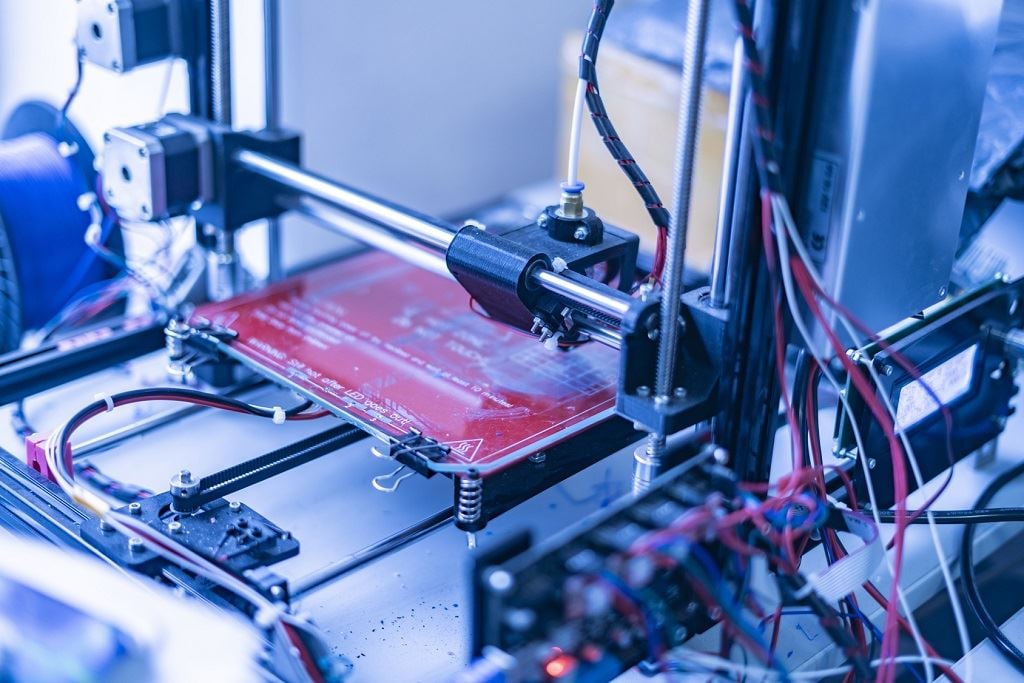![[Image: Fotolia]](https://fabbaloo.com/wp-content/uploads/2020/05/Fotolia_247126313_Subscription_Monthly_M1_img_5eb099bbb87ac.jpg)
Personal 3D printers are a (relatively) new introduction to the home interior. In a way, some might consider 3D printers a home appliance like an oven, sewing machine, or toaster.
However you choose to classify a 3D printer, and just like any other addition to the home, precautions should be made to keep the home as safe as it was before it was brought in. The best way to ensure that your 3D printer can be used safely in your own home is to install proper ventilation and make accommodations that can prevent fire, breathing hazards and other problems. If you’re a homeowner or a small business owner with a 3D printer in your house, consider the following.
Smoke Detectors
Because 3D printers generate a lot of heat and use a non-trivial amount of electricity to function, they can be a fire risk. Installing a smoke detector in the room where the 3D printer is located is a responsible way to prevent a fire or catch it in its early stages. It may be prudent to install a new smoke detector by your workstation if the nearest detector is a far distance away or across the room.
3D printer owners with larger homes may want to consider interconnected/linked smoke detectors. With these, all alarms will sound simultaneously rather than just the alarm near the source of the fire/smoke, potentially allowing you to respond to issues sooner.
Those who want to ensure that their smoke detectors are working properly can check the smoke detector batteries (and replace them) every 6 months. Testing the smoke detector quarterly can also help ensure that the smoke detector is working properly. Furthermore, smoke detectors have expiration dates. Homeowners who want to ensure that their smoke detector is trustworthy can do so by checking the expiration date and replacing the smoke detector when it expires.
External Ventilation
External ventilation works by sucking out the air from the 3D printer and replacing the air inside the room with cool air from outside the home. There are multiple products on the market that make this kind of ventilation possible. Reversible air flow extractors, with and without thermostats, work well and are affordable enough for any homeowner. These extractors may need to be set up by a professional if you do not feel comfortable performing this kind of installation on your own.
Anchored Workstation and Proper Placement
Placing a 3D printer on a free-standing table that is easy to access puts small children at risk for reaching for the printer. Flimsier tables may give under the weight of a 3D printer or may carry the risk of getting knocked over. Setting the printer on a table or workbench that is anchored high up on the wall helps keep the printer away can help prevent these issues. This shelf or table should be installed near an outlet so the printer can easily be plugged in without placing the cord in the way.
Placing the 3D printer away from sleeping areas or heavily trafficked areas keeps any fumes relatively contained and reduces the chances of someone bumping into your workstation. Those who have a smaller home and who are unable to find a part of the home that is away from the sleeping areas may have to get creative. Another way to ensure that people in the household are safe is to relocate the 3D printer into a shed or garage, provided that the shed or garage has an electrical connection (as well as possibly insulation and/or a dehumidifier).
Proper Build Chambers/Enclosures
3D printers have parts that are known to heat up to very high temperatures. These superheated parts can pose a burn risk, especially for those who have small children and pets in the home. The best way to prevent this from being a problem is to purchase a 3D printer with a fully enclosed build chamber. The fully enclosed build chamber is essentially a heat proof box that encapsulates the parts of the 3D printer. In addition to providing safety to the people in the house, the build chamber also helps the 3D printer maintain a consistent temperature while it is working. Some models may have means for filtering air from the chamber to the outdoors or simply ciruclate the air inside the chamber.
Safety First
If ovens and stoves should have fume hoods and nearby smoke detectors, it’s not so farfetched to think that a similar level of care should be taken with a 3D printer. If you don’t think a toaster oven should be used on a card table just around the corner in a busy hallway, perhaps a similar principle applies to your 3D printer. It’s not so crazy to invest some time or even money in finding/building a proper workstation if you plan to use a 3D printer for years to come.
Read all instructions and warnings that come with your 3D printer. Never use a 3D printer without setting up proper ventilation and understanding the risks. This may mean reading up on 3D printers before actually making your purchase, and establishing a room of your house specifically for 3D printer use.











We were able to view video footage of the 3D printing hair-caught incident from last week and have determined exactly how it occurred, and how to prevent it from happening again.